08. Dec 2016 - DOI 10.25626/0057
Dr. Florian Peters is a historian and research associate in the Berlin Research Department of the Institute of Contemporary History. He completed his Ph.D. at Humboldt University with a dissertation on the culture of history in late socialist Poland. His research focuses on the history of East Central Europe in the twentieth century, especially social transformations since the 1970s. He is the author of Revolution der Erinnerung. Der Zweite Weltkrieg in der Geschichtskultur des spätsozialistischen Polen (Revolution of Memory. The Second World War in late socialist Poland's culture of history). Berlin: Ch. Links, 2016.
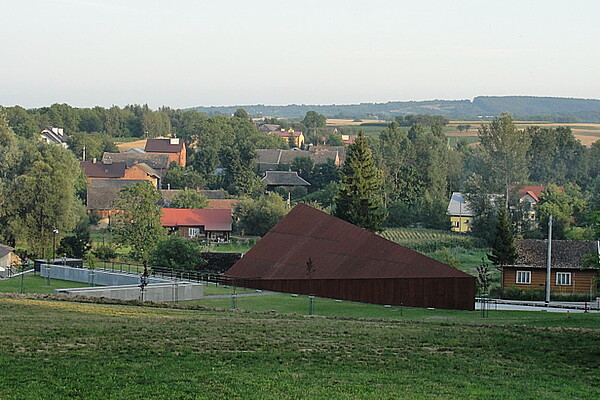
It is good news that this museum has opened its doors. There cannot be any reasonable doubt that the Ulma family, to whom it is dedicated in the first place, deserves to be commemorated with reverence. Józef and Wiktoria Ulma were ordinary peasants from the Polish village of Markowa who, beginning in 1942, hid eight members from two Jewish families in their humble cottage. On 24 March 1944, they were shot by German gendarmes – along with their six children and the Jews they had tried to rescue from annihilation. In 1995, they were posthumously honoured as Righteous Among the Nations by Yad Vashem and are currently being considered for beatification by the Catholic Church.[1]
The haunting story of Józef and Wiktoria Ulma certainly merits being told in an accessible, reflective, state-of-the-art museum. Their tragic fate gives ample reason to "promote positive attitudes", says the museum’s initiator and founding director Mateusz Szpytma. But how do the exceptional heroic deeds of individuals relate to the moral stance of the collective they are considered to belong to? What made such people live up to the commandment of helping the persecuted against all odds, while others did not? And what does it mean to commemorate their uncommon courage today, as historical records of hatred and intolerance seem to be anything but past experiences to European societies?
Questions of this kind inevitably arise with any attempt at commemorative musealization, but they are raised with particular urgency by the twofold dedication of this museum, which is devoted both to the Ulma family and to "Poles Saving Jews in World War II". This explicit double outlook may open up a window to understand 'big history' in the framework of the small and exemplify what happened at the rural edges of the Holocaust through the lens of local relations between ordinary people. But it can also carry the risk of allowing comforting conclusions and politically tendentious simplifications to be drawn in the place of sound answers that require balanced contextualisation and the sustained clarification of ambiguities.
Visitors approaching the home village of the Ulma family from the nearby town of Łańcut will most likely be struck by the idyllic landscape in this part of Southeastern Poland, which seems to be taken straight from a picture book. Situated along a picturesque stream amidst gentle hills, Markowa is a lovely village of scattered houses and cottages typical of the Waldhufendorf settlements of German colonists who were invited to the Subcarpathian (Podkarpackie) region in the Middle Ages. The museum is not located at the authentic site of the Ulma family cottage, which was demolished after the war, but occupies a new building in the centre of the village, literally in the shadow of the Catholic parish church and the village hall (Dom Kultury). Although it fits in with its surroundings in terms of proportion and scale, the decidedly modern architecture of the museum, designed by the renowned Warsaw architecture firm of Mirosław Nizio, creates a visible contrast to the village atmosphere. The clear, angular lines of the building cut sharply into the slight slope of the property, and the raw, industrial, and somewhat fashionable aesthetics of the pre-rusted steel façade makes the museum appear alien to the rural world around it. In the best case scenario, visitors will experience this impressive architecture as the initial, subcutaneous irritation of simple-hearted romantic views on social relations in the countryside.
Although the museum is not situated in a historical building, it does visibly refer to the site of its historical dedication: the front of the building mirrors, in a minimalist style, the outer form of Józef and Wiktoria Ulma’s original wooden cottage, adding a nearly emblematic clarity to it. Moreover, the exhibition space inside the museum is dominated by a 5 x 8 metre structure of opal-white glass which constitutes a 1:1 reconstruction of the Ulma's little house. This illuminated glass structure is surrounded by a rather dark room with exposed concrete walls and exhibition panels made from black metal, which makes for a somewhat sacral atmosphere. Similar means of sacralization are also used in the front court of the museum: illuminated glass plaques on the ground commemorate the Poles who were murdered for helping Jews, and a wall beneath the main building bears inscriptions of the names of Poles who saved Jews in the Subcarpathian region. Those who were saved are commemorated, somewhat less traditionally, with an orchard of young fruit trees that occupies the slope next to the museum – which is a reference not only to the Garden of the Righteous at Yad Vashem, but also to the nursery of Józef Ulma, who pioneered fruit growing and gardening in his village.
By integrating elements of sacral commemoration, the Ulma Family Museum partly resembles a memorial site, thus reflecting recent trends in Polish museum architecture exemplified by the Warsaw Uprising Museum. However, it does so in a minimalist and unemotional way. Although the exhibition space is dominated by the contrast between the lit mock-up of the Ulma cottage and the dark, looming space around, this black and white opposition is not played out in a blatant manner. Instead, it provides a framework for distinguishing the core story of the Ulma's rescue efforts from a wider context, i.e. Polish-Jewish relations before and under German occupation, help offered by Poles towards the Jews in the face of the Holocaust, and the post-war trials against the perpetrators and their aides. All inscriptions are provided in Polish, English, and Hebrew, which is a visible hint that the museum does not exclusively address a Polish Catholic audience.
The interior of the glass structure, which is devoted to the life and deeds of the Ulma family, hardly resembles a shrine, notwithstanding large photographs in accommodating sepia adorning its walls. This is mainly because of the meaningful authentic objects and documents exhibited there, including original furniture and a wooden workbench from the interwar period as well as books from the family library, personal papers, and the photography equipment used by Józef Ulma, who was a passionate amateur photographer and left behind hundreds of pictures portraying family and village life. Most of all, these authentic exhibits convey a sense of modesty and dignity in spite of everyday hardships. This impression is intensified by the compressed atmosphere, which makes it difficult to imagine that a family with six children was able to live in a space with only a few square metres, and who additionally found ways to offer shelter for eight persecuted Jews. One of the most touching exhibits relating to this act of charity is a Bible used by Józef and Wiktoria Ulma, on the pages of which they had marked the passage on the Good Samaritan from Luke.
Unlike the presentation dedicated directly to the Ulma family, the portion of the exhibition devoted to the wider context includes only few authentic artefacts. It draws mainly on documents, photographs, and audiovisual displays of documentary footage and witness testimonials. Additionally, interactive media stations offer the possibility to browse for information about other Polish Righteous from the Subcarpathian region. The dominant colour used in this part of the exhibition is black, and the mode of presentation is matter-of-fact and distancing. Even the interesting photos portraying the Polish and Jewish village life in Markowa before the war, many of which were made by Józef Ulma, are presented in small format, thus frustrating possible expectations of identification with the presumably harmonic life of the villagers.
Given the long-standing debates on Polish-Jewish relations in the face of the Holocaust, it remains disputable what elements should be included in a proper contextualisation of the events at hand, whose perspectives should be considered and how they are to be weighted. The exhibition concentrates on Catholic Poles bringing help to their fellow Jewish citizens and pays only little attention to the traumatic experiences of the Jews themselves. This is a legitimate choice, but it entails some serious problems, which are not always handled in a convincing manner within the exhibition. One of which is made evident with the conjoined use of national and regional categories in defining the scope of the display: while the museum dedication to "Poles saving Jews" implies a national scope with all the necessary differentiations included, the exhibition actually confines itself by presenting only that help which was offered by the Polish population of the predominantly rural Subcarpathian region. However, it does allow for some inconsistency by making prominent mention of the organized help proffered by the Polish underground state institutionalised in the Żegota Council to Aid Jews, even though Elżbieta Rączy, a member of the curating team, frankly admits, in her detailed book on the topic, that this council "did not play a bigger role" in Subcarpathia.[2] In contrast, the help offered to Jews by the notable Ukrainian population of the region is generally excluded from consideration. The highly problematic consequences of these curatorial choices become apparent with the inclusion of a large map of Subcarpathia showing all the places where Poles rescued Jews: there are a lot of dots in the areas mainly inhabited by Poles, but almost none in the parts of the region with a predominantly Ukrainian population; visitors get the impression that helping the Jews was a mass phenomenon amongst Poles, whereas the Ukrainians did not care much about it.
An even more fundamental problem arises from the fact that the exhibition does not give high priority in exposing the broad and differentiated spectrum of the attitudes demonstrated by Poles towards the Jews. Again, it is legitimate to focus on 'positive attitudes', but how can we fully appreciate the degree of heroism shown by the few who acted like the Ulmas, if we do not get to know much about what others thought and did?
To be sure, cases of negative behaviour enacted by Poles upon Jews are not completely absent from the exhibition. Anyone who wants to learn about such unsettling nuances will find some information, but more often than not, they are not addressed explicitly. For example, the exhibit presents, in full, a sentence from a 1952 trial against Markowa residents, who were suspected to have helped the German police to search for and execute Jews hiding in the village in December 1942. A patient visitor, taking the time to read through all the information, will learn about the disquieting suspicions against members of the local community, but will be comforted by the fact that, in the end, all of them were found innocent.[3] The most telling exhibit indicating the atmosphere of blackmail and threat that was faced not only by the Jews, but also by Polish peasants trying to help them, is an anonymous letter to the Markowa resident Andrzej Szpytma. In the weeks following the execution of the Ulma family and their Jewish companions he was urged to remove 'in any possible way' (w jakikolwiek sposób) the Jews, whom he was suspected of hiding. Otherwise, the letter threatened, he would share the fate of the Ulmas.[4]
The fact that the Ulma family died because they were probably denounced by a Polish ('navy blue') policeman is also mentioned in the exhibition, but without being spotlighted. However, there is no hint of the controversial allegation by Jan Grabowski, who pointed out the possibility that Polish peasants reacted to the murder of the Ulma family by committing the mass murder of hidden Jews in the neighbouring village of Sietesz. Although the empirical evidence on this incident indeed requires further substantiation,[5] it would have been a good idea to include information on similar cases in the museum, as it would certainly help to draw a broader picture of the circumstances in which Józef and Wiktoria Ulma made their decisions. An obvious choice would be the well-documented story of the pogrom of Jews prepared by their Polish fellow villagers in Gniewczyna Łańcucka, less than 20 kilometres from Markowa: as we know from the extensive testimony of Tadeusz Markiel and detailed research by Alina Skibińska, members of the local voluntary fire brigade searched their village for hidden Jewish families on their own initiative, locked them up in a house next to the parish church, tortured and robbed them, and probably raped the women. Finally, they reported them to the Germans, who had to do little more than shoot them.[6]
In the Markowa museum, visitors are spared from learning about such distressing incidents. The exhibition avoids making explicit the point that the admirable moral stance presented by Józef and Wiktoria Ulma was all but typical for their fellow Polish citizens. Nonetheless, attentive visitors will not leave the museum without having touched on the atmosphere of ambiguity and fear subtly permeating many exhibits, namely the (predominantly Polish) witness accounts. Although attendees will probably find it difficult to assess the entire ambiguous scope of contemporary choices, they will learn that the Holocaust was not something more or less unrelated to Polish society, as it has been presented in dominant accounts focused on industrial style death camps, where extermination was bureaucratically organized and carefully executed by the Germans. Instead, by focusing on the Polish individuals who supported and rescued Jews in a rural setting, the museum paradoxically directs attention towards the edges of the Holocaust, which are to date less present in popular historical consciousness. It was here that a great number of ordinary Poles experienced the annihilation of their fellow Jewish citizens most concretely, as pogroms and murder took place in the hearts of Polish villages. In such local contexts, Poles were not doomed to remain as passive bystanders to German terror, but had to choose between difficult alternatives: they could offer shelter to their Jewish neighbours, risking their own lives to do so, or they could more or less actively participate in their extermination. Although the Markowa museum does not outspokenly confront its visitors with these dilemmas, it does at least implicitly convey the notion that local communities and individual choices could make a difference.
By opening a local, bottom-up approach to a key aspect of the history of the Holocaust, the Markowa museum turns out to be a fascinating example of history written and presented from below. The museum's initiator and founding director, Mateusz Szpytma, is a professional historian who has worked at the Kraków branch of the Institute of National Remembrance (IPN), but his motives for researching the wartime history of the village and engaging in the museum project certainly stem from the fact that he was born and raised in Markowa. Mateusz Szpytma is actually a relative of the Ulma family, and thereby also related to the custodian greeting visitors at the entrance of the museum, who is the son of Józef Ulmaʼs brother. The museum owes part of its exhibits to both the Ulma and Szpytma families, too. Although it was funded mainly by the Subcarpathia voivodeship regional government (7,5 million zł) and received additional funding from the national ministry of culture (1 million zł), it seems to be authentically rooted in the local community.
When Mateusz Szpytma recalls the long way that eventually led to the opening of the museum, he basically tells a story of developing and deepening local historical consciousness. A major step on the way was the unveiling of a monument to the Ulma family in 2004. This event was attended by Abraham Segal, a Jewish survivor living in Israel, who had been saved by Markowa peasants during the war. Apart from arousing media interest, this encounter contributed to widen the focus of the local commemorative activities, which had hitherto been strictly limited to the Polish Catholics who provided shelter to the Jews. People born after the Holocaust, who had not met a single Jew in their village throughout their lives, started to recognize that Jews had been part of the history of their local community for generations. Reflecting on this process of growing historical self-awareness, one cannot avoid being reminded of slogans such as 'Dig where you stand', popularized by the History Workshop movement flourishing in Western Europe in the 1970s and 1980s. This movement advocated a similar bottom-up approach to uncovering local history including non-academic inquiries, oral history, and easily accessible public discussion. To be sure, one should not suspect Szpytma of the leftist convictions held by most of the Western 'barefoot historians', who challenged traditional historical narratives with the explicit aim of doing justice to the historical experiences of workers, women, and other subaltern groups, nor mix up the Markowa museum with other local initiatives aimed at uncovering the Jewish history of Polish provincial towns. Yet, it should be acknowledged that the museum shares some typical characteristics of participatory approaches to history from below, and is not solely an offshoot of right-wing politics of history.
That said, it is also obvious that the Ulma family museum fits perfectly well into the agenda of the national politics of history being propagated by the new right-wing Polish government. Ever since the anti-Semitic campaign unleashed by Poland's national communists in 1968, the Polish Righteous have been exploited by self-proclaimed guardians of the Polish nation to counter any challenges to the heroic-martyrological self-perception of Poles. Recently, nationalist whitewashing has gained new momentum, as government representatives such as the minister of education Anna Zalewska, and the newly-appointed head of the Institute of National Remembrance, Jarosław Szarek, publicly questioned Polish responsibility for the infamous Jedwabne pogrom of 1941. Moreover, the 'Law and Justice' (PiS) government prepared new legislation intended to "defend the good name of the Polish nation", which is unlikely to improve conditions for objective historical research and pluralist public debate on controversial issues like Polish co-perpetration in the Holocaust.[7]
It is no wonder then, that Polish president Andrzej Duda did not hesitate to take the long trip from Warsaw to the Polish southeast to take part in the official opening of the Markowa museum in March 2016. In his opening speech, he called Markowa "a grand place for the history of the Republic of Poland, for it manifestly exemplifies why we, a Polish people, can feel worthy."[8] By drawing on the exceptional deeds of the Ulmas in order to make easy, affirmative generalisations on the Polish people as a whole, Duda demonstrated once more how to deliberately misuse the Polish Righteous. However, from any serious historical perspective, Markowa cannot serve as a positive symbol of Polish-Jewish solidarity bolstering the self-image of the Polish nation. As Mateusz Szpytma insisted in 2011, "Markowa was no paradise for the Jews, although a lot of them were saved there." And with regard to the Jedwabne debate he added, "It would be good, if the history of the Ulma family would not be exploited instrumentally to negate other facts in public discourse."[9]
It would be good indeed, if the Polish public would not accept the appropriation of brave individuals like the Ulmas for blatant political aims. It would also be good, if Szpytma would remain true to the reputable views he expressed previously, since the government's obvious satisfaction with the newly-opened museum has catapulted him into the position of vice-president of the Institute of National Remembrance, the major agency for the national politics of history.
As for the Markowa museum, Szpytma's successor will take over the delicate task of trying not to succumb to the current trend of the politicisation of national history. The Ulma family museum will only prove credible as long as it does not subscribe to simplistic national self-affirmation. Józef and Victoria Ulma are definitely worthy serving as positive role models for a modern civil society that can sympathetically engage with others – actually even more so than the radical nationalist post-war partisans, recently being praised in Poland as 'cursed soldiers' (żółnierze wyklęci). Still, a museum commemorating the Polish Righteous that aspires to more-than-local relevance can neither limit itself to a narrow national-catholic symbolic universe, nor avoid undertaking a balanced account on good, evil, and the grey zone in between. Although the Markowa exhibition leaves some open questions in that respect, it should be regarded as a welcome starting point. As the curators explicitly declare their openness to future changes and supplements to the exhibition, the museum has a chance to engage in further reflection on the various everyday dilemmas imposed on both Poles and Jews by the German policy of terror and extermination.
Otherwise, the Ulma family museum will hardly be able to make its voice heard and give notable input to the transnational Holocaust memory, which until now holds a prominent place for Germans who attempted to rescue Jews from the Holocaust, but is much more restrained when it comes to Poles who did the same. There is good reason for that state of affairs: in the German context, helpers to the Jews are automatically perceived as exceptions to the rule, while the remarkable nature of such individuals is not clearly acknowledged within the Polish national framework. If it remains unrecognized that people like Józef and Victoria Ulma acted differently than the majority of Poles, the world will continue to commemorate NSDAP member and wartime profiteer Oskar Schindler as the paradigmatic figure of the Righteous who saved Jews.
Florian Peters: Towards a Balanced Tribute to the Polish Righteous? The Ulma Family Museum of Poles Saving Jews in Markowa.. In: Cultures of History Forum (08.12.2016), DOI: 10.25626/0057.
Copyright (c) 2016 by Imre Kertész Kolleg, all rights reserved. This work may be copied and redistributed for non-commercial, educational purposes, if permission is granted by the copyright holders. For permission please contact the editors.
Official Homepage: "The Ulma Family Museum of Poles Saving Jews in World War II"
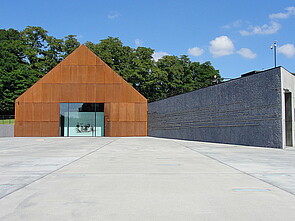
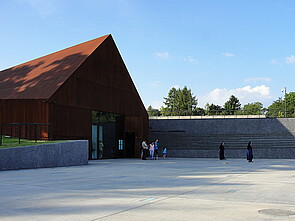
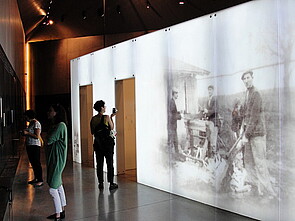
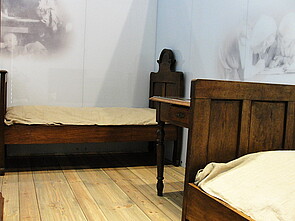
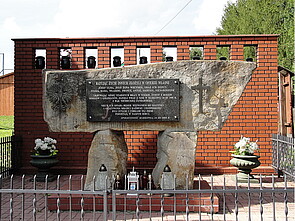
Lidia Zessin-Jurek · 20.04.2023
A History that Connects and Divides: Ukrainian Refugees and Poland in the Face of Russia’s War
Read more
Lidia Zessin-Jurek · 20.12.2021
Trapped in No Man’s Land: Comparing Refugee Crises in the Past and Present
Read more
Interview · 08.03.2021
A Ruling Against Survivors – Aleksandra Gliszczyńska-Grabias about the Trial of Two Polish Holocaust...
Read more
Lidia Zessin-Jurek · 03.09.2019
Hide and Seek with History – Holocaust Teaching at Polish Schools
Read more
Maciej Czerwiński · 11.04.2019
Architecture in the Service of the Nation: The Exhibition ‘Architecture of Independence in Central E...
Read more
Get this article as PDF download (including pictures).